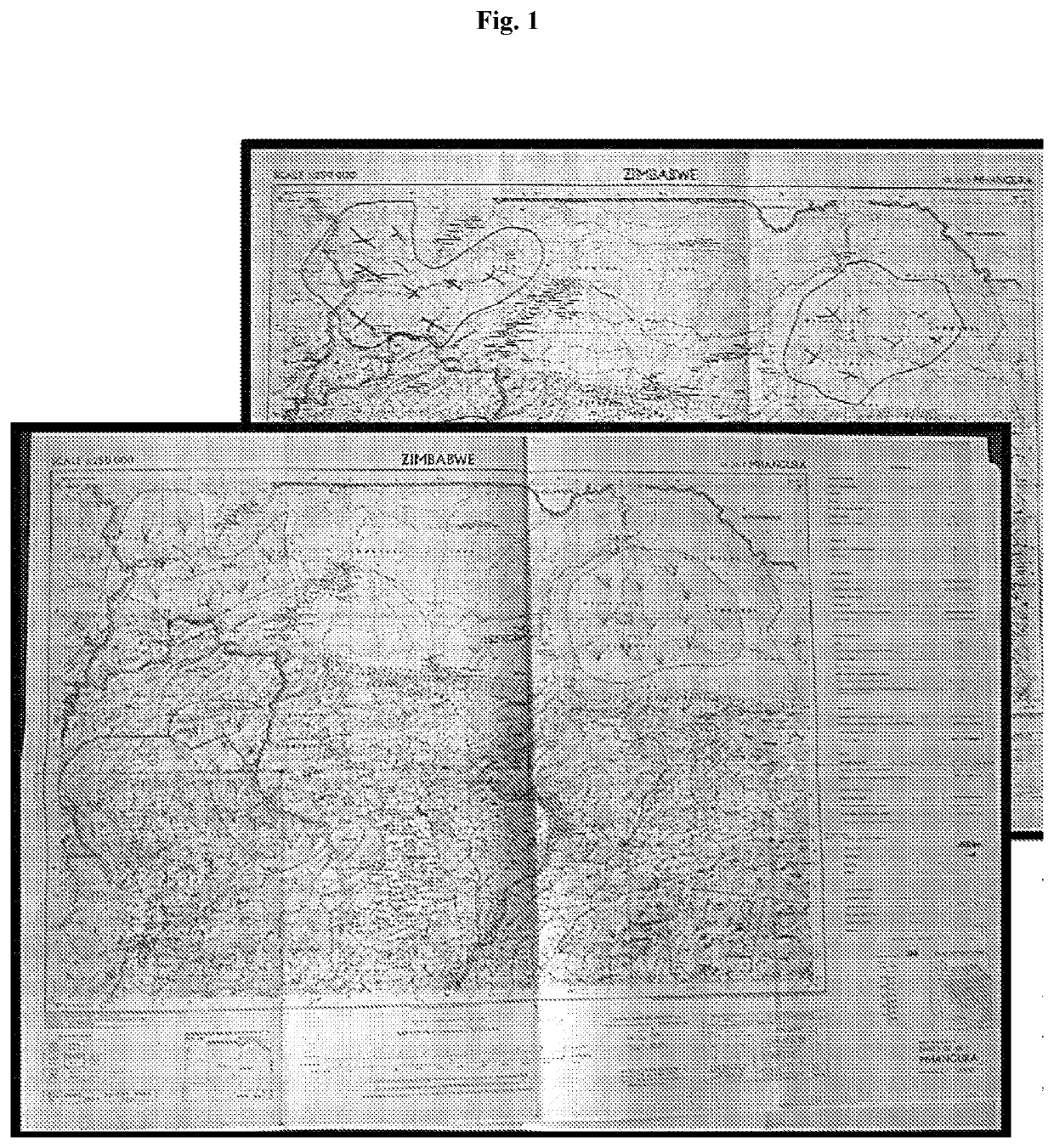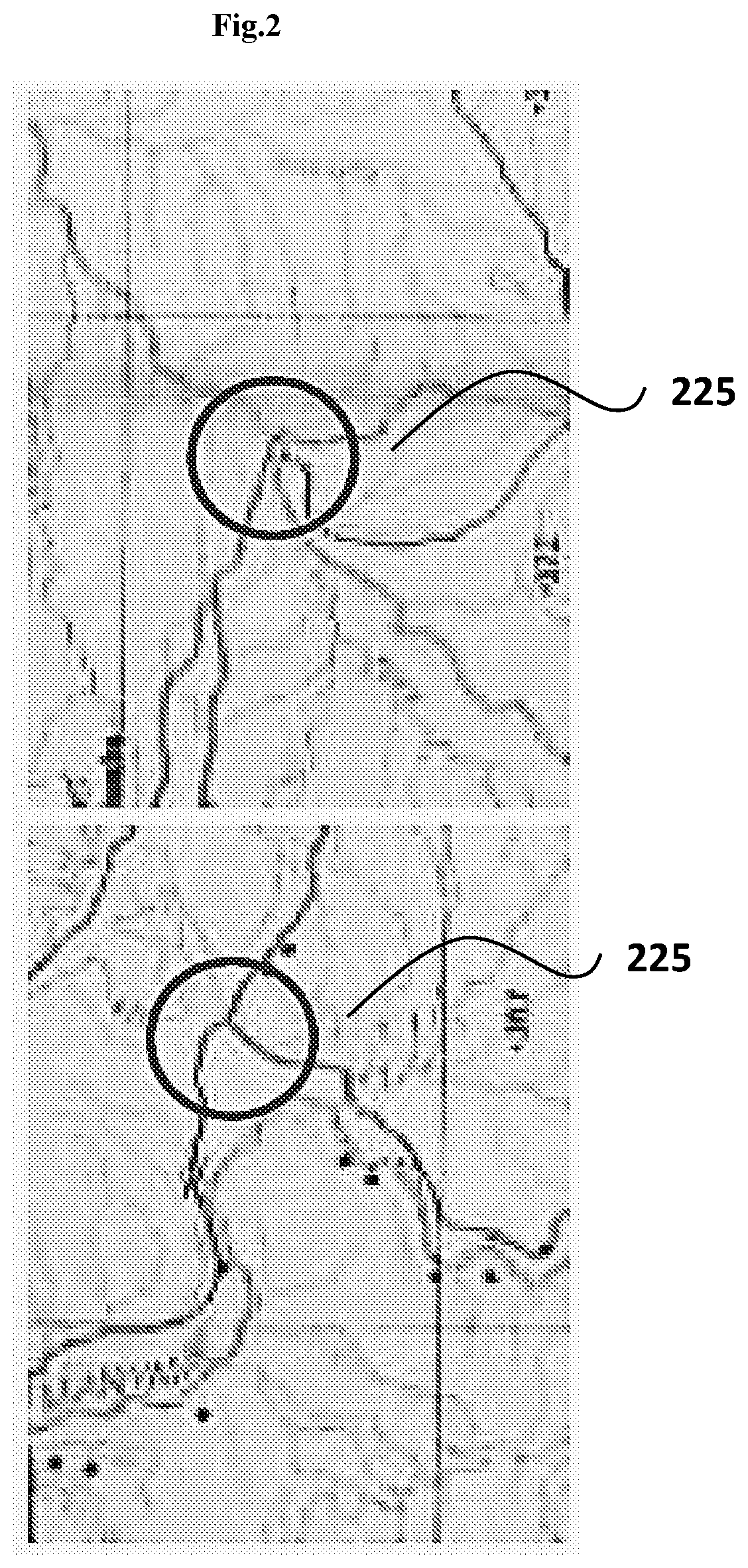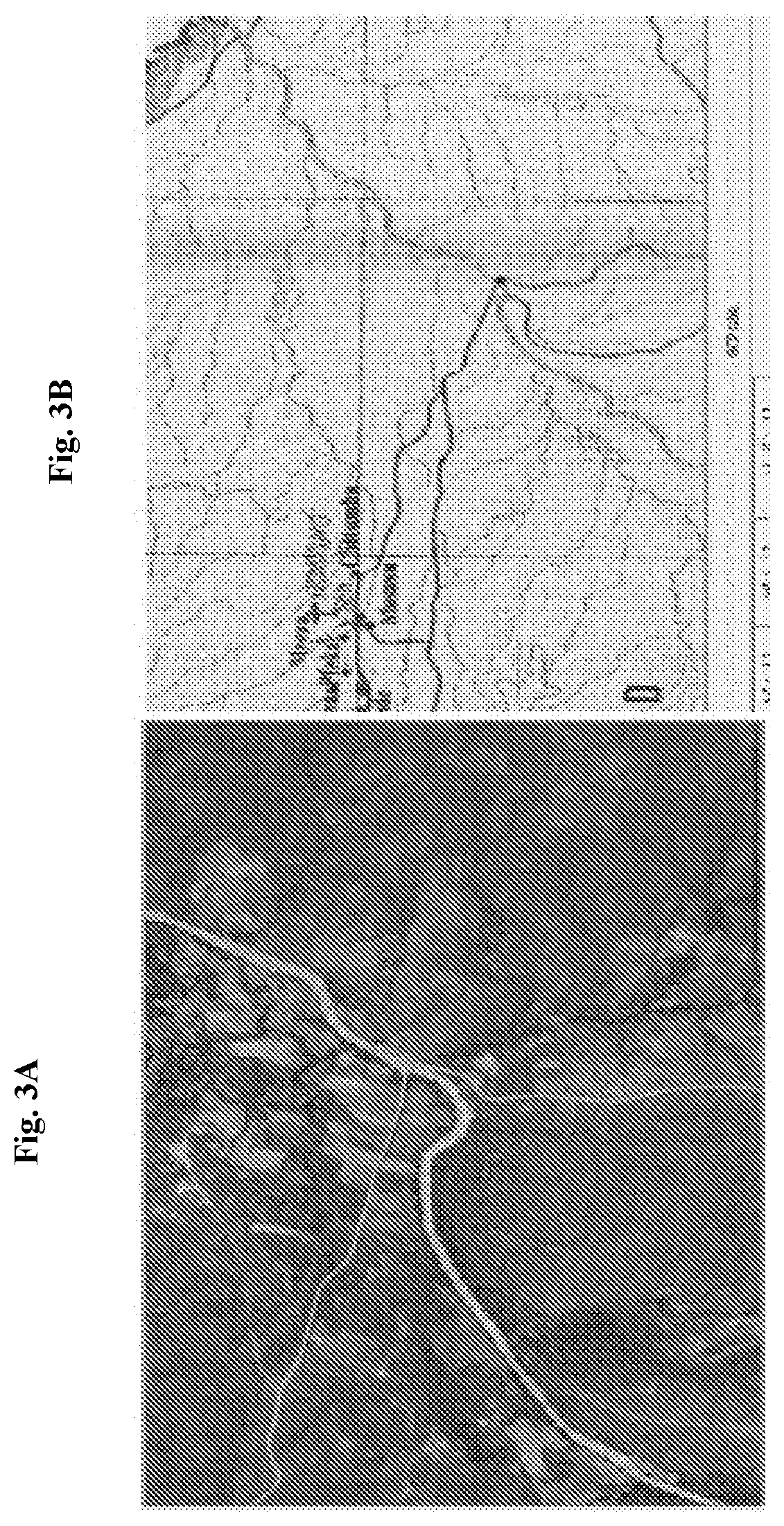System and method for identifying and assessing topographical features using satellite data
a topographical feature and satellite data technology, applied in the field of system and method for identifying and assessing topographical features using satellite data, can solve the problems of depleting this crucial asset, pastoralists are experiencing significant livestock mortality, and traditional methods for locating pastures are increasingly unreliable and resource intensive, so as to reduce herd mortality, accurate and reliable grazing, the effect of long-term development and economic growth
- Summary
- Abstract
- Description
- Claims
- Application Information
AI Technical Summary
Benefits of technology
Problems solved by technology
Method used
Image
Examples
example 1
[0164]A first set of 100 satellite images from Meteosat satellites for a pre-determined area in Africa is obtained with low spatial resolution of 3 km by 3 km during a 10 day period. A second set of 5 satellite images from SENTINEL satellite(s) is obtained with high spatial resolution of 10 m by 10 m during the same time period. Both sets of images contain water and vegetation information using different bands of the satellites. Both set of images are processed to select cloud-free pixels. The selected cloud-free pixels from both set of images are used to generate an index array indicative of the vegetation density with a high resolution of 10 m by 10 m. For each pixel of the array, fusion of information from data collected using different satellite(s) is performed. The magnitude from the first set of images is selected. If there is more than one cloud-free pixel during the day time, the average is taken to obtain such magnitude. The spatial distribution of the magnitude is obtained...
PUM
 Login to View More
Login to View More Abstract
Description
Claims
Application Information
 Login to View More
Login to View More - R&D
- Intellectual Property
- Life Sciences
- Materials
- Tech Scout
- Unparalleled Data Quality
- Higher Quality Content
- 60% Fewer Hallucinations
Browse by: Latest US Patents, China's latest patents, Technical Efficacy Thesaurus, Application Domain, Technology Topic, Popular Technical Reports.
© 2025 PatSnap. All rights reserved.Legal|Privacy policy|Modern Slavery Act Transparency Statement|Sitemap|About US| Contact US: help@patsnap.com



